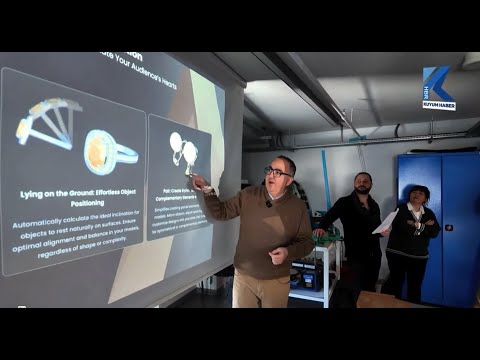Your Cart is Empty
Customer Testimonials
-
"Great customer service. The folks at Novedge were super helpful in navigating a somewhat complicated order including software upgrades and serial numbers in various stages of inactivity. They were friendly and helpful throughout the process.."
Ruben Ruckmark
"Quick & very helpful. We have been using Novedge for years and are very happy with their quick service when we need to make a purchase and excellent support resolving any issues."
Will Woodson
"Scott is the best. He reminds me about subscriptions dates, guides me in the correct direction for updates. He always responds promptly to me. He is literally the reason I continue to work with Novedge and will do so in the future."
Edward Mchugh
"Calvin Lok is “the man”. After my purchase of Sketchup 2021, he called me and provided step-by-step instructions to ease me through difficulties I was having with the setup of my new software."
Mike Borzage
Rhino 3D Tip: Enhancing Rhino 3D Workflow with the History Function: Tips and Best Practices
September 22, 2024 2 min read

When working with Rhino 3D, utilizing the History function can significantly enhance your modeling process by offering a non-destructive workflow. The History feature allows you to create linked geometry that updates automatically when the parent geometry is modified. Here are some valuable tips to make the most out of Rhino's History feature:
- Understanding History: Rhino's History tracks the relationships between commands and the geometry they create. When History is enabled, any changes made to the parent geometry will propagate to the dependent, or child, geometry.
-
Enabling History: To turn on History, you can use the
Record Historycommand. You can enable it for specific commands by clicking on theRecord Historybutton in the status bar or typingHistoryand selectingRecord. -
Commands with History Support: Not all commands support History. Some of the most common History-enabled commands include
Loft,Sweep1,Sweep2,BlendSrf, andNetworkSrf. Make sure to check if the command you are using supports History to take full advantage of this feature. - Modifying Parent Geometry: When you edit the parent geometry, the linked child geometry will automatically update. This can save you a significant amount of time as you don’t need to manually adjust the child geometry every time you make changes.
-
Breaking History: If you need to break the History link between geometries, use the
HistoryPurgecommand. This will delete the History of the selected objects, making them independent. -
History Visualization: To visualize the History relationships, you can use the
Historycommand and selectShow. This will display arrows indicating the parent-child relationships between objects. - Performance Considerations: While History can be a powerful tool, it can also impact performance, especially with complex models. Use History selectively and be aware of the potential impact on system resources.
- Combining with Other Tools: Combine History with other Rhino tools, such as the Gumball for transformations or Grasshopper for parametric design, to create highly dynamic and adaptable models.
-
Best Practices:
- Always confirm History is enabled before starting a command to ensure relationships are tracked.
- Regularly review and manage dependencies to maintain control over your model.
- Save versions of your work periodically to have backups in case you need to revert changes.
By effectively using Rhino’s History feature, you can streamline your modeling process, making it more efficient and adaptable. For more advanced tips and professional support, consider exploring resources from NOVEDGE, a trusted provider of Rhino tools and plugins.
You can find all the Rhino products on the NOVEDGE web site at this page.
Also in Design News

💎 Rhino Artisan Arrives in Turkey: Revolutionizing Jewelry Design
February 27, 2025 1 min read
Read More
ZBrush Tip: Mastering Curve Surface for Unique Textures in ZBrush
February 27, 2025 2 min read
Read MoreSubscribe
Sign up to get the latest on sales, new releases and more …



